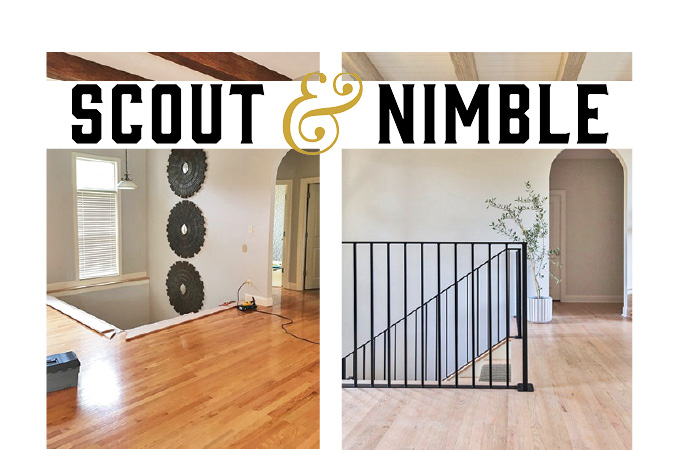We recently transformed red oak floors, what many think of as an outdated trend from the early 2000s, into beautiful whitewashed ones. We know this can be a hard task, and based on the number of questions we received about it, we realized we had to share our process!
» Step 1: Do your research. There are so many stain varieties, it’s important to know what look you want to achieve before you reach out to a contractor or take on the transformation yourself. If you have any extra wood from your home, we suggest testing different stain samples to see the results. Remember that all grains of wood are different, so every stain will look a little different depending on what you’re starting with.
» Step 2: Hire the right contractor. Since refinishing floors can be a hard process and one that may require a few extra steps, it’s important to consult a contractor beforehand to get an accurate price estimate. Hire someone you trust, and show them the color you want. We have found that a lot of contractors like to stick to what they have done in the past or steer away from flooring stains that might be more difficult, so make sure you are upfront about the results you expect and the stains you want to use.
» Step 3: The process (sand and stain) We were working with 3-inch red oak floors from 2004. They originally were stained a natural honey color followed by a layer of polyurethane. Finishing products are not all created equal, and some tend to become amber or ‘orange’ over time. Some people might have ripped up these floors and put in a new engineered style, but that tends to be a bit more expensive and we wanted to keep what the clients had in the house. The first step is to sand the floors completely. After that, it’s on to the stain. We used Antique White CB-1023 by EZStains (which can be found online at ezstains.com). We originally tested a clear coat, but the floors still had a red/orange tint to them. The biggest challenge with red oak is its natural red hue, which, when you are attempting to go a lighter shade, can appear pink. We used the antique white to cut down on this.
» Step 4: Glaze Next, we went over the floors with a wiping stain, Pickling White by Old Masters. You wipe it on against the grain and then wipe it off. The opaque white pigment stays in the grain when you wipe it off to create a whitewashed look.
» Step 5: The finish We finished with Masters Armor in a flat finish by Old Masters. It usually requires about two coats, but it makes your floors durable and delivers a beautiful matte finish. (Most polyurethanes are a satin or high-gloss finish, so we particularly love this matte option.) A lot of polyurethanes also are known to yellow over time, but this one does not.
Scout & Nimble is a retail site and blog that aims to make expert design accessible to all. Follow at blog.scoutandnimble.com.








